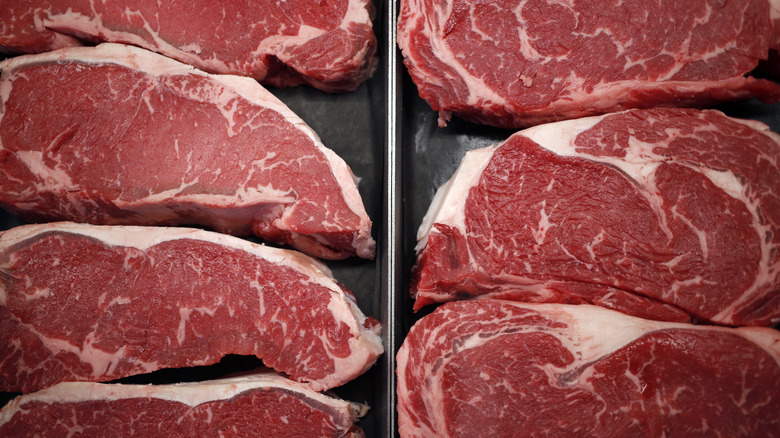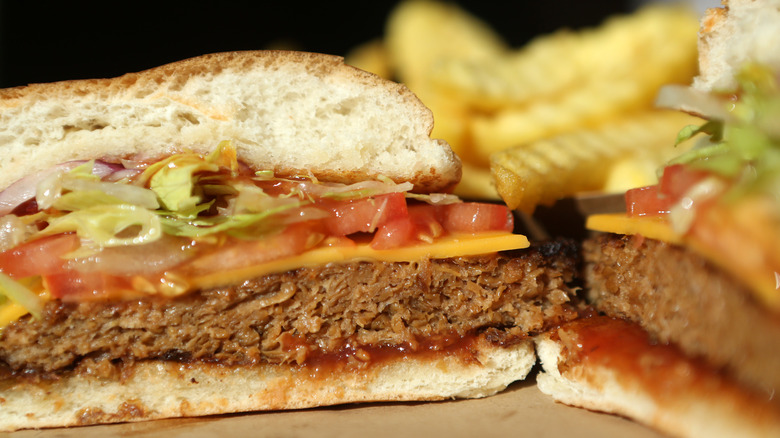What Is The Red Liquid In Your Meat Packaging Anyway?
You've just pulled a beautifully-marbled, center cut ribeye from the fridge en route to the grill, and there it is — your meaty treasure is sitting in a puddle of thin, red liquid that evokes thoughts of the cow's demise. Are these the last few drops of bovine blood, and is it even safe to bite into a steak that's less than thoroughly exsanguinated?
Rest assured, blood it is not, but the watery consistency does offer a clue as to the liquid's origin. According to the American Meat Science Association, proteins in the muscle fibers lose their grip on water over time, and as that water is expelled, it carries with it myoglobin, the same protein responsible for the red coloration in that ribeye.
Myoglobin is found throughout the animal kingdom, especially in deep-diving aquatic mammals, such as whales and seals, which a 2015 Rice University study found carry 10 to 20 times the cellular amount than humans do. (This is partially what allows these sea creatures to go without oxygen for long periods of time.) It is a relative, albeit a distant one, of hemoglobin, notes the 2006 edition of the Encyclopedia of Respiratory Medicine, both of which aid in the transport of oxygen throughout the body and contain heme. And it's heme you can blame for any bloody confusion.
What is heme?
If heme sounds vaguely familiar, you have the recent explosion in plant-based meat alternatives, namely Impossible Foods' flagship product, the Impossible Burger, to thank. When the meatless patties hit the market, what astounded consumers and set the product apart from earlier entries was the ability to mimic the succulent, red juiciness of a real burger. On its website, Impossible Foods explains it achieved this gustatory wonder by isolating heme outside of the animal kingdom. The heme that colors these patties and other Impossible offerings is derived from legume roots.
Further, myoglobin plays an important role in the appearance of meat throughout the cooking process. In his seminal text "On Food and Cooking: The Science and Lore of the Kitchen," Harold McGee lays out the number changes myoglobin undergoes chemically and what that means. Red raw meat is replete with oxygen-carrying myoglobin, whereas in cooked meat, myoglobin is a denatured, oxidized brown. And, in cured and grilled meats, nitric oxide and carbon monoxide, respectively, lock myoglobin molecules in a characteristic pink state found in corned beef and the smoke ring encircling a Texas brisket.
So next time you spot that pool of red liquid below your meat, you'll know it's just the myoglobin seeping out and no cause for concern.

